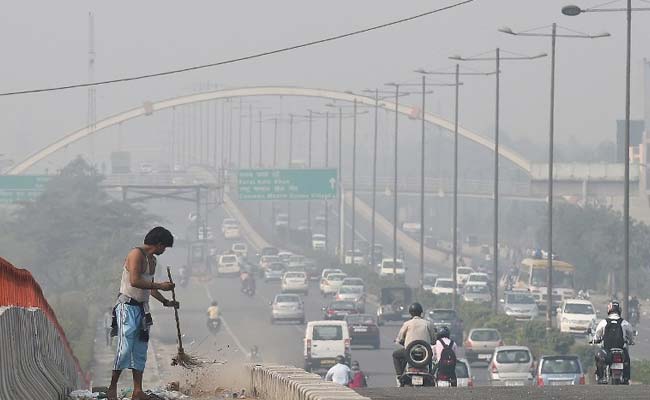- Delhi-NCR experienced very poor to severe air quality with AQI readings above 400 in some areas
- The 24-hour average AQI was 361, with 24 out of 39 stations reporting hazardous levels
- Delhi recorded an average AQI of 391, with Noida, Greater Noida, and Ghaziabad also severely affected
Delhi-NCR woke up to a thick blanket of smog on Sunday as the Air Quality Index (AQI) plunged into the 'very poor' category across several parts of the city. In some areas, the situation was even grimmer, as AQI readings slipped into the 'severe' zone.
The Central Pollution Control Board (CPCB) reported that the 24-hour average AQI stood at 361. Data revealed that 24 out of 39 monitoring stations in the region recorded AQI levels above 400 -- marking the highest pollution spike of the season so far.
Stations at Wazirpur (424), Bawana (424), and Vivek Vihar (415) were among those registering alarming figures.
Areas worst affected included Rohini (435), Nehru Nagar (426), Bawana (426), RK Puram (422), and ITO (420). The average AQI was recorded at 391 in Delhi, 391 in Noida, 366 in Greater Noida, 387 in Ghaziabad, and 252 in Gurugram.
On Saturday, CPCB data had already flagged Delhi as the most polluted city in India. Neighbouring NCR cities mirrored the crisis, as Noida (354), Greater Noida (336), and Ghaziabad (339) reported hazardous air quality levels.
According to the latest report from the India Meteorological Department (IMD) on Saturday, the minimum temperature is expected to remain around 13 degrees Celsius for the next seven days. Cold morning and evening winds are further intensifying the winter chill. Rain is not expected at present, and the weather is likely to remain foggy.
According to health advisories, prolonged exposure to such poor air quality can significantly increase the risk of lung and respiratory diseases, especially for children, the elderly, and individuals with asthma or heart conditions.
The IMD stated that the worsening pollution is linked to falling temperatures, which make the air heavier and reduce wind speed, causing pollutants to remain trapped near the surface. The combination of fog and smog is making the haze denser. Construction activities and vehicular emissions continue to be major contributing factors.
Health experts have advised residents to limit outdoor activities, especially during early mornings and late evenings, wear protective masks, and avoid direct exposure to polluted air.
(Except for the headline, this story has not been edited by NDTV staff and is published from a syndicated feed.)













